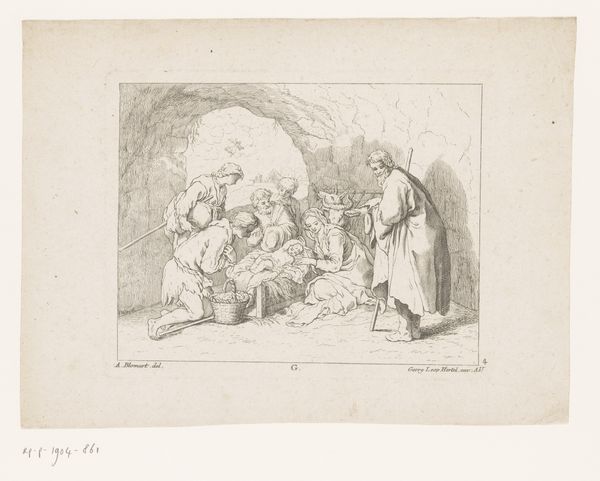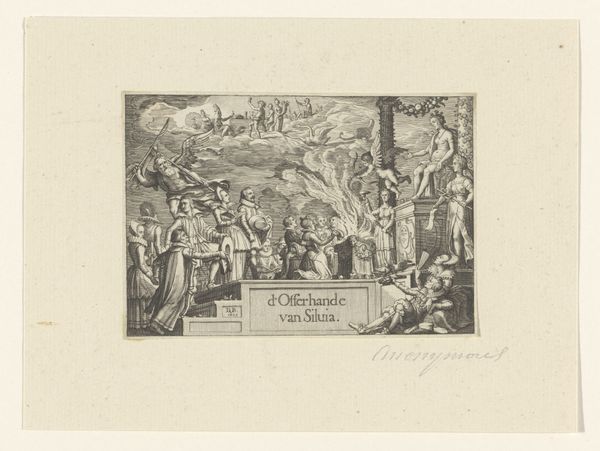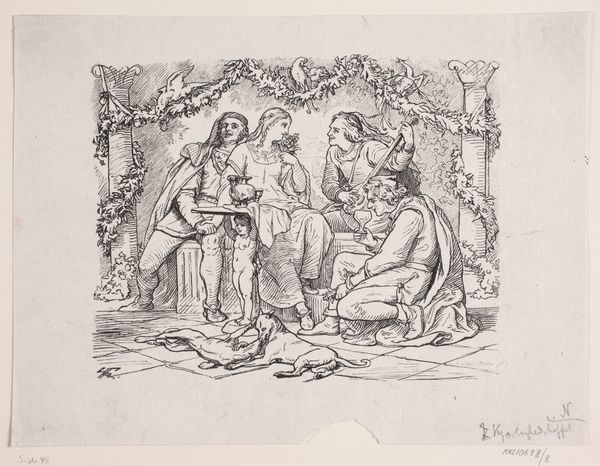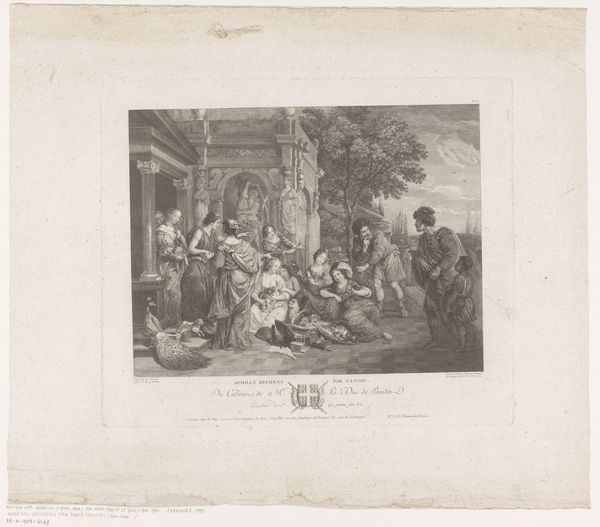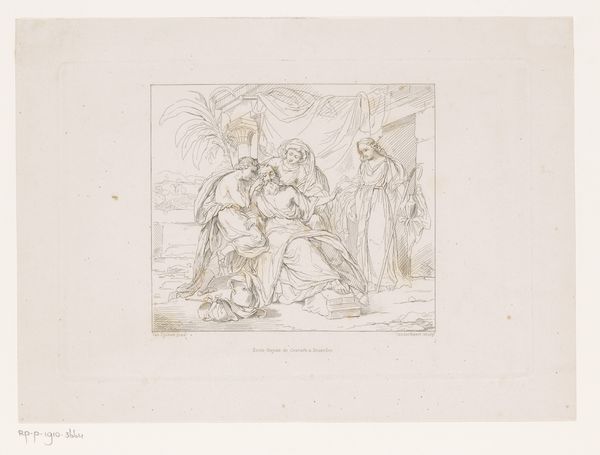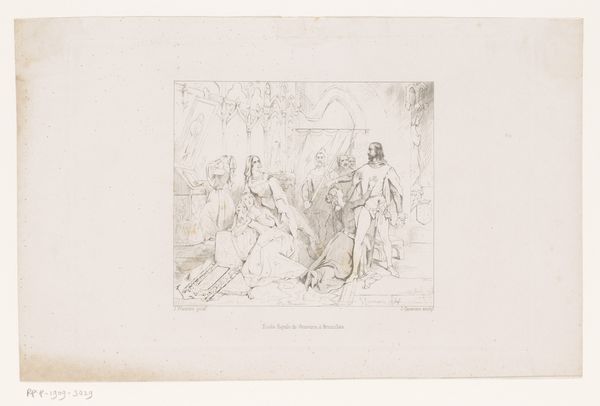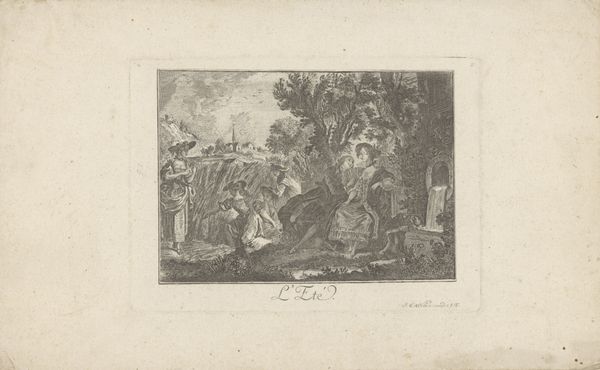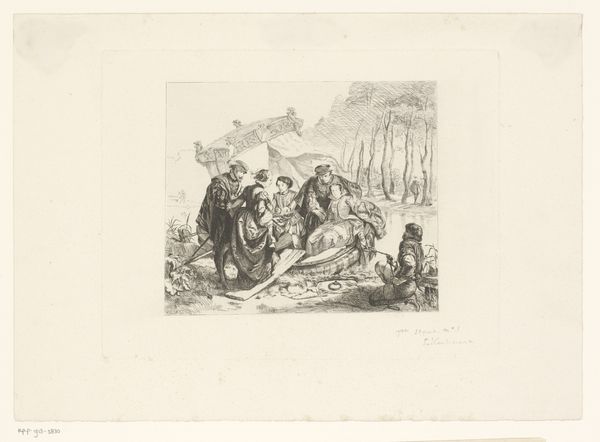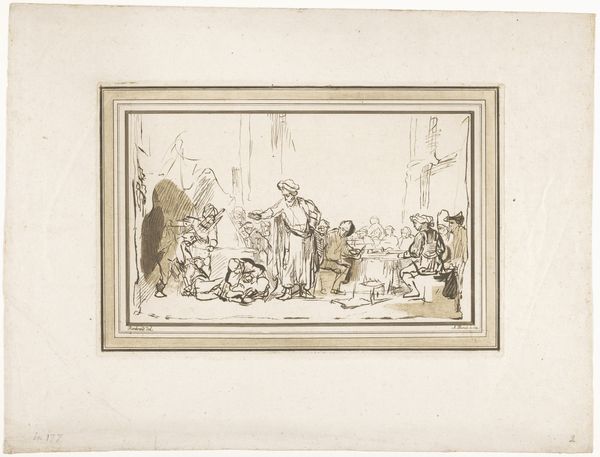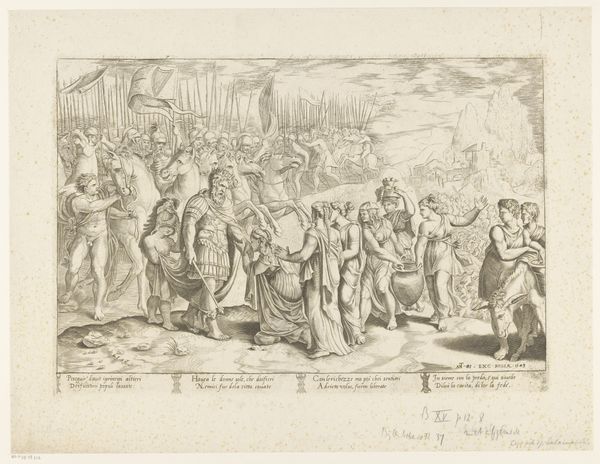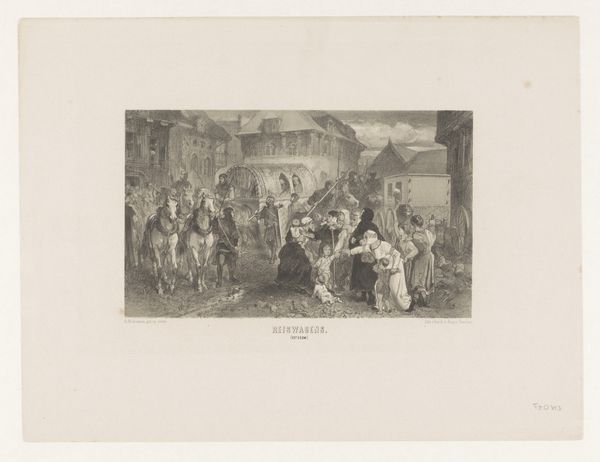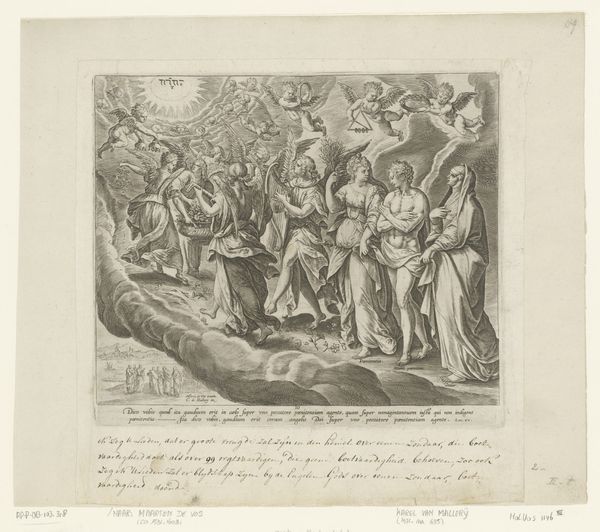
drawing, print, ink, pen
#
drawing
#
medieval
#
narrative-art
# print
#
landscape
#
figuration
#
ink
#
pencil drawing
#
line
#
pen
#
history-painting
Dimensions: 200 mm (height) x 255 mm (width) (bladmaal)
Curator: This drawing, entitled "Følget drager hjem," which translates to "The Entourage Returns Home," was created in 1878. It’s a print made with pen and ink. What strikes you most about it? Editor: The mood, definitely. The somber tones created with line and the cluster of figures... it has a distinctly melancholy feel. A sort of historical sorrow. Curator: Yes, the artist employed distinct line work to generate tones which adds to that feeling. Beyond just lines, it shows what one could achieve with a pen and ink at the time. We must recall how drawing, printmaking, and book illustration were intimately related means of creating and disseminating visual imagery to popular audiences at this time. Editor: Absolutely. And who were the audiences at the time? This narrative seems steeped in medievalist imagery, alluding to historical sagas. One could certainly frame it within broader dialogues about nationalism, mythology, and the construction of cultural identity in late 19th-century Europe. Look how those figures on the left seem set apart, seemingly listening to the saga. What can that separation say? Curator: Precisely. The process by which images like these, drawn and then mechanically reproduced, allowed a single artist to reach a broader audience that printmakers or sculptors previously could, allowing access for more women artists. This also speaks to the growing market for accessible and affordable art during this period. The choice of ink on paper makes this easily portable. Editor: Considering this printmaking boom alongside increased access for female artists... How might we read this artwork as engaging in those dialogues surrounding gender and artistic production during that era? Does that medieval scene, those narratives and fables have anything to say about femininity or societal gender norms? Curator: Well, it is hard to see without the context for this particular one. Regardless, let’s not forget that materials, mass production, and increased accessibility deeply informed the work as much as subject matter. It is so important to consider these contexts rather than a strict art history lineage. Editor: I agree. By considering those intersecting forces—historical narratives, material conditions, socio-political debates about identity, and, in the case, gender—we arrive at more profound understanding of works like “The Entourage Returns Home.” Curator: Indeed, and that is a great reminder to consider it all, in both past and present interpretations.
Comments
No comments
Be the first to comment and join the conversation on the ultimate creative platform.
